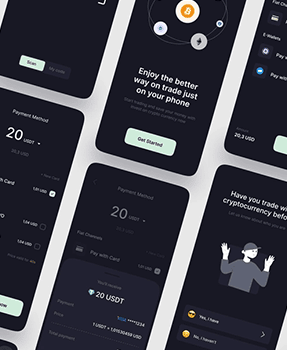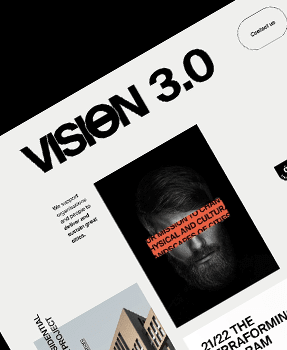





Listed among top-rank
service providers

Top App Developers in USA

Top Blockchain Development Companies in USA

Most-Trusted Android App Development Companies
The mobile app development industry has seen rapid growth as millions of applications are present on both Android and iOS platforms. However, the creation of an app is impossible without the framework. In this article, you will find key information about Flutter vs ReactJS.
When talking about Flutter, is an open-source development platform from Google that allows developers to build cross-platform applications as well as mobile and web applications based on a single codebase for Windows, Linux, Android, macOS, and iOS.
Google’s SDK builds fast, attractive experiences across the desktop, website, and mobile with the existing code. Flutter integrates with existing code and is utilized by organizations around the world. Flutter facilitates the development of fast and disruptive applications utilizing the open-source platform and can be embedded as the UI framework for your preferred platform.
The Flutter framework possesses a foundation library, engine, as well as widgets. In Flutter, the mobile application development approach is much different because of the declarative User Interface, so developers just require beginning from the last. Due to this, before beginning the development process, the business owner/developer requires to get the bigger picture in mind of the User Interface requirements. This is because developers can build the entire UI by combining various widgets.

Flutter also provides an opportunity for professionals to build custom widgets. It is noted that to improve the User Experience, developers need to improve the capabilities of applications. The Flutter framework also delivers different software packages to enable accessibility to the data warehouses.
Without any doubt, Flutter is a renowned mobile application development framework. Just have a look at some key benefits or features:
Community Support – A huge community support is available, which is a significant aspect of the Mobile App Development Framework.
Expressive Interfaces – The expressive interfaces can be effortlessly and effectively developed in Flutter.
Google Firebase Support – Flutter utilizes Google Firebase support for the backend development.
Hot Reload – This feature allows the development team to see the latest changes instantly. So, there is no need to refresh the code to review the latest changes.
Open-Source Platform – Flutter is a great open-source platform for front-end development. Developers can utilize this platform to transform ideas into awesome apps.
Rapid Application Development – Developers can utilize Flutter for the simple and quick development of applications with robust features, as outlined in the Best Mobile App Development Tools in 2023.
Rich Widgets – The platform offers rich widgets for stylistic or structural elements. Due to this reason, developers can build an expressive and elegant User Interface based on the business model of the client.
Seamless Debugging – The advanced features allow developers to do seamless development and error fixing.
Simple Learning Curve – Flutter is easy to learn and a developer from technical background can get command over it.
Single Code Base – Developers do not need to do separate coding for Android or iOS apps because they can utilize a single code base for the entire cross-platform development.
Non-Native Feel: With Flutter, you cannot get the 100% same look as the native ones. The thing to remember about Flutter is that it does not build native components. However, we can say that it somewhat replicates iOS-specific components and Android’s Material Design with its Cupertino library, but it is not the same.
Big File Sizes: One of the notable loopholes in Flutter is the large size of files, which can be further understood by reading about Mobile Device Fragmentation and Its Impact on Business. In some cases, the size of a file may become a notable issue for the development team as they need to pick another development tool. Although new smartphones are offering plenty of storage space, users with older devices often face storage issues. They need to remove other apps or data from the smartphone to create space.
Dart: Flutter is utilizing a Dart programming language. However, it is often acknowledged as both the most notable disadvantage and the most advantageous feature of Flutter. On one side, it is a productive and powerful language. On the other hand, it is also among the ones that have seen limited usage and growth in the last few years. In simple words, it is not as great as JavaScript, Java, C#, and Objective C.
Lack of Third-party Libraries: When talking about app development, third-party libraries, and packages make a notable impact as they enable some key features for the development team. These third-party libraries are usually pre-tested, open-source, and conveniently available without any cost. However, the non-availability of third-party libraries affects the inclusion of some features in the application.
React, the open-source and free JavaScript library is utilized by website developers to create user interfaces that utilize UI components, as detailed in this step-by-step guide on deploying a React app. It is noted that ReactJS is widely utilized to develop the single-page web app.
React can be utilized to create server-rendered, mobile, or single-page apps with frameworks. However, React is just related to the handling state and later rendering it to the DOM. It is a reason that React apps usually need specific client-side functionality along with the extra libraries for routing.
The code is based on reusable components that are present in the SRC folder and the Pascal Case is utilized for the naming. The rendering of components can be done to the DOM’s element. However, it is done through the React DOM library. When doing rendering, props can be utilized to pass value between the components.
The key benefit of utilizing ReactJS is that it allows the development team to inject the HTML coding with JavaScript. They can create a DOM node’s representation by simply declaring the Element function. Along with that, it also assists the development team to review the HTML code’s syntax. Instead of utilizing the traditional DOM class, the platform utilizes className.JSX tags.
In ReactJS, the numeric values along with expressions should be written inside brackets {}. JSX attributes, the “quotation marks” represent strings. In several use cases, unlike traditional JavaScript, ReactJS is written utilizing JSX for component simplification and to keep the code neat & clean. The ReactJS app usually has a single root DOM node that renders elements into the DOM and alters the page’s UI.

When talking about front-end development, ReactJS is the popular library extensively utilized by the development team for the robust development process. Here are some top features that the platform offers to developers.
Component-Based Architecture – ReactJS is based on several components, with each of them having its specific logic, written in JS.
Declarative UI – Makes React code highly readable and simple to fix bugs.
Developer Toolkit – Delivers a superb toolkit to the development team so they can create robust solutions.
Enhances Developer Productivity – The awesome features of ReactJS enhance productivity due to better functionality.
JavaScript XML or JSX – XML creates syntax like HTML to build React components. On the other side, JSX makes it super simple to create the building blocks.
One-Way Data Binding – It controls the flow of data and makes it highly effective and flexible. It is a reason that it forces the development team to utilize the callback feature to do the editing of components and prevents direct editing.
React Native – The feature is the transformation of React code to do the rendering compatible with Android or iOS platforms.
Learning Curve: For new developers, learning ReactJS may take a significant amount of time. It means that the learning curve is high, and this can become an issue for junior-level developers who are looking to create an application with ReactJS.
Long Data Hierarchy: Within ReactJS, data navigation is complex and complicated. For example, unlike other JavaScript scripting tools, ReactJS does not support parallel data handling. If users want to do the navigation from one Div to another in ReactJS, they will need to first do the navigation of the parent node, then to the topmost parent node, and then do the navigation of the tree node’s second hierarchy.
Overhead Costs & Time: In several cases, it becomes essential to download another library that is react-enabled, highlighting the Importance of Updating Your App regularly. However, it enhances time and cost overheads. For example, if the development team is utilizing the Carbon framework for the User Interface experience, then it becomes vital to do the Carbon components downloading with React.
External Library Support: ReactJS offers support for several external third-party libraries. There are just a few ReactJS native libraries. However, external libraries can assist the development team to use CSS and HTML functionalities and build them into JSX which has a steep learning curve and complexities.
Although both Flutter vs ReactJS is better for awesome User Interface designing and development, still usability depends on the usage and requirement. Both Flutter vs React comes with several similarities such as React features, creating cross-platform applications utilizing one codebase, awesome tooling, hot reloading, and excellent User Interface. However, both have their differences. UI Components & APIs Development, Technical Architecture, and Programming Language are the key factors to consider, and understanding the Mobile App Development Challenges can provide further insights. Just have a look at their detailed information below.
Developing cross-platform apps requires support for native components. Without this support, your app will not feel native. The framework must provide access to native modules without any discomfort, as access to native modules is vital when developing cross-platform apps.
In addition to ReactJS and React Native, ReactJS can create a Native environment with JS Bridge. But ReactJS needs third-party libraries to access native modules, which leads to unpredictable behavior in apps.
Flutter delivers the rendering of UI components with ease during the navigation, utilizing various libraries, state management, and accessing device APIs. Flutter offers widgets for Material Design & Cupertino so developers can do the rendering of UI without any hassle. In simple words, Flutter is enriched with UI components and APIs. However, ReactJS hugely relies on third-party libraries.
It is crucial to get knowledge about the technical architecture of both technologies when doing a comparison. ReactJS utilizes JavaScript bridge which is a runtime environment. It allows seamless communication with native modules. On the other side, ReactJS does the compilation of JS code into native code during the runtime utilizing Facebook’s Flux technology. In several circumstances, the need for developing a connection between native modules during the runtime with the JavaScript code can cause the application to slow down.
The framework usually offers satisfactory performance. Several key components are already present in Flutter. It is a reason that you do not want a bridge as Flutter utilizes frameworks like Cupertino and Material Design along with the Skia C++ engine. Applications developed on Flutter are more stable as compared to ReactJS. The reason is that Flutter delivers all required protocols and channels. The availability of various features typically eliminates the requirement for developers to utilize other platforms.
The development team is capable to deliver a single code for Android and iOS mobile devices utilizing the cross-platform app technology ReactJS. However, in this process, Javascript is utilized as the coding language. ReactJS utilizes JavaScript to build user interfaces as it is a dynamically typed language to do several things, but the process is also much annoying. JavaScript is a common language and does not need much effort and time.
On the other hand, Flutter programming is based on the Dart language that was first released in 2011. Dart is a blend of Java and JavaScript. The language is simple to learn if you have expertise with C#, JS, and other OOP languages. In a short period, Flutter became a popular cross-platform for mobile app development services. ReactJS is simple to implement as it is noted that JavaScript is present for several years.
| Aspect | Flutter | ReactJS |
|---|---|---|
| Platform Support | Cross-platform (Windows, Linux, Android, macOS, iOS) | Primarily for single-page web apps, can be extended for server-rendered, mobile |
| Language | Dart | JavaScript |
| User Interface | Declarative UI, rich widgets, expressive interfaces | Component-based architecture, declarative UI, JSX |
| Development Speed | Hot Reload for instant changes, rapid application development | Developer toolkit, one-way data binding, React Native for mobile |
| Community Support | Large community support | Strong community support |
| File Sizes | Larger file sizes | Potential overhead costs and time for additional libraries |
| Learning Curve | Easy to learn with a simple learning curve | Higher learning curve for new developers |
| Third-party Libraries | Limited third-party libraries | Support for several third-party libraries |
| Native Feel | Somewhat replicates native components (Cupertino library for iOS, Material Design for Android) | May require additional libraries for native feel |
| Data Hierarchy | N/A | Complex data navigation, lack of parallel data handling |
| Programming Language | Dart (blend of Java and JavaScript) | JavaScript |
| Technical Architecture | Utilizes Dart language, has native components and APIs, stable applications | JavaScript bridge runtime environment, potential performance issues |
Several organizations often get confused about the best mobile application development platform to get the best possible result. Currently, ReactJS and Flutter are the popular libraries and frameworks in the domain of mobile application development. Both of them are robust when utilized correctly based on the project’s requirements. However, Flutter vs ReactJS have its pros and cons. Companies should assess what is best for their business. The selection of a professional app development agency is crucial in this regard, especially one that understands the Transformation of Enterprise Through Mobile-First Approach.

Satisfied
Customers
Work hours
Work hours
customer
retention rate
All company logos and trademarks appearing on our website are the property of their respective owners. We are not affiliated, associated, endorsed by, or in any way officially connected with these companies or their trademarks. The use of these logos and trademarks does not imply any endorsement, affiliation, or relationship between us and the respective companies. We solely use these logos and trademarks for identification purposes only. All information and content provided on our website is for informational purposes only and should not be construed as professional advice. We do not guarantee the accuracy or completeness of any information provided on our website. We are not responsible for any errors or omissions, or for the results obtained from the use of this information. Any reliance you place on such information is strictly at your own risk.